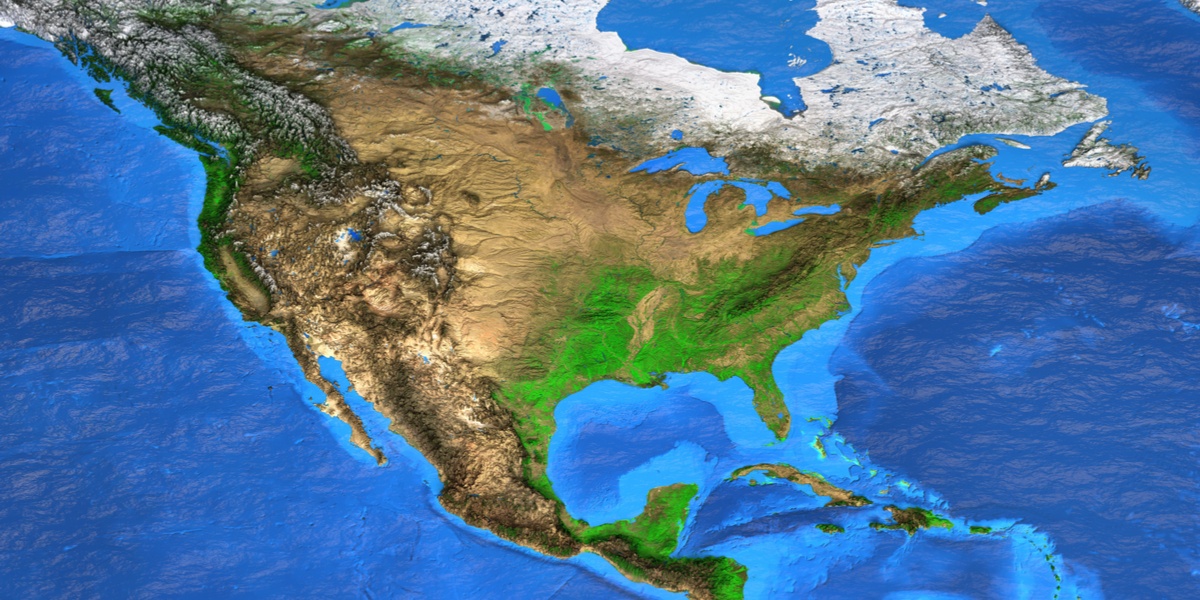Importance of Climate Zones in USA | HVAC Design Aspects

There are many technologies that improve the performance of HVAC systems in buildings, allowing a drastic reduction of electricity and gas bills. However, these measures may become useless under certain weather conditions. For example, a high-efficiency boiler can offer attractive savings in the US Northeast, where winters are cold and heating bills are high. However, these boilers have no use in tropical locations, where buildings don’t even have space heating in many cases.
In general, you should stay away from “recipe-based upgrades” for your building systems. Avoid purchasing equipment just because you saw advertisement offering an attractive percentage of energy savings. Only an energy audit can give a reasonable estimate of how different building upgrades will perform.
Get an HVAC design that meets the unique needs of your building.
Performance of Building Upgrades Under Different Climates
New York, New Jersey and many other locations in the USA have both a cooling season and a heating season, but there are also important differences even between locations that require both cooling and heating for buildings. If a certain climate requires plenty of cooling days and just a few heating days, property owners benefit from prioritizing air conditioning upgrades, while the opposite applies for places where winter is more intense than summer.
Some enhancements for existing HVAC systems are also climate-dependent. For example, air conditioning economizers and energy-recovery ventilation (ERV) are only effective under some weather conditions. If the local climate provides little or no opportunities to use these devices, their upfront cost is difficult to justify.
Local weather also influences the effectiveness of solar panels and wind turbines. However, note that these technologies may be viable even in locations with moderate wind or sunshine. As an example, consider the two following solar power systems:
- System #1: 10 kW, generates 12,000 kWh/year in a building paying 25 cents/kWh.
- System #2: 10 kW, generates 16,000 kWh/year in a building paying 12.5 cents/kWh.
In this case, the second solar power system is more productive, but the first is more lucrative. Although the first system only produces 75% as much energy as the second, it saves $3,000/year, while the second only saves $2,000/year.
Overview of Climate Zones in North America
The US Department of Energy provides a compact and informative list of the climate zones in North America, and what to expect in terms of heating and cooling loads. Local climate is one of the most important aspects considered by energy consultants and HVAC designers before carrying out energy modeling for your building.
Before proceeding with the definition of climate zones, it is important to understand the concepts of heating degree days (HDD) and cooling degree days (CDD).
- The concept of HDD refers to temperature differences below a specified value, typically 65°F. For example, one day at 60°F adds 5 HDD, and one day at 55°F adds 10 HDD. Repeat the procedure for the entire year, and you get the annual HDD.
- CDD is the same concept applied to cooling: daily temperature differences above a specified value. One day at 70°F adds 5 CDD, and one day at 75°F adds 10 CDD.
In general, climate types are described in terms of temperature and precipitation. These are among the main variables that must be controlled by HVAC systems indoors, while maintaining a supply of fresh air and extracting air that accumulates pollutants.
|
CLIMATE TYPE |
MAIN FEATURES |
|
Hot-Humid |
Receives over 20 inches of precipitation per year and meets at least one of the following conditions: |
|
Mixed-Humid |
-Receives over 20 inches of precipitation per year. |
|
Hot-Dry |
-Receives less than 20 inches of precipitation per year. |
|
Mixed-Dry |
-Receives less than 20 inches of precipitation per year. |
|
Cold |
5,400 HDD or more, but less than 9,000 HDD |
|
Very-Cold |
9,000 HDD or more, but less than 12,600 HDD |
|
Subarctic |
12,600 HDD or more |
|
Marine |
Meets all of the following conditions: |
As you can see from the table above, weather conditions are extremely varied and HVAC design requirements are affected accordingly. You will get the best results with building-specific solutions, considering both the climate and the applicable building codes in your location.

Keith Fink
Keith is the Franchise Brand Manager at NY Engineers, Keith is all things related to our project portfolio, brands and all things you need to know before we start your project.
Join 15,000+ Fellow Architects and Contractors
Get expert engineering tips straight to your inbox. Subscribe to the NY Engineers Blog below.


